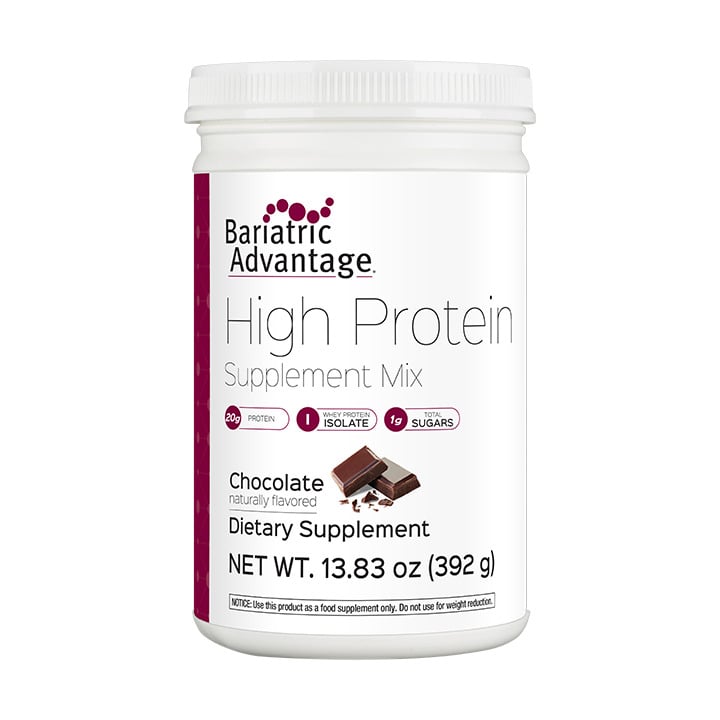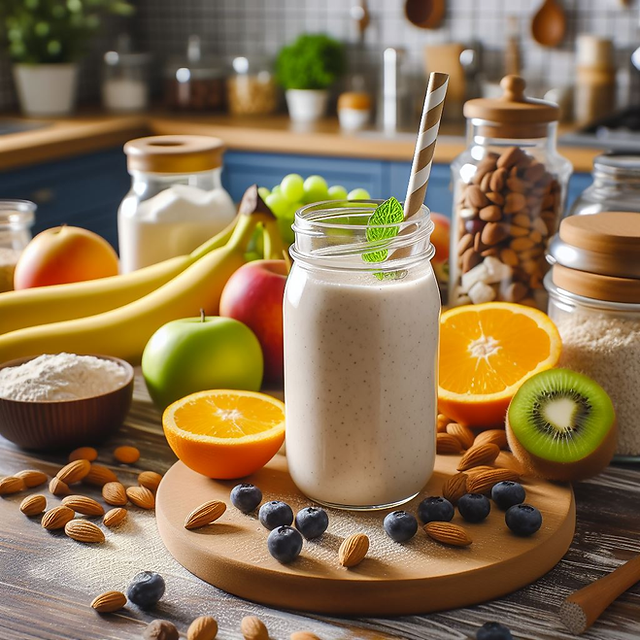Protein powder has become an essential part of many fitness enthusiasts’ diets. It’s crucial to know how to mix it for the best results. Whether you’re looking to build muscle, lose weight, or recover faster, mixing your protein powder correctly is key. This guide will explain what to mix protein powder with to maximize its benefits.
The Classic Base: Water and Milk
Water
Water is perhaps the most basic and intuitive liquid to mix with protein powder. It’s calorie-free and very convenient. You can simply add the powder to your water bottle, shake it, and it’s ready to drink. Water also allows you to taste the natural flavors of the protein powder you’re using.
Benefits of Water
Water is excellent if you aim for calorie control. This is particularly important for those looking to lose weight. It also makes your drink easier to digest. Because water is light, it won’t leave you feeling too full. Lastly, it ensures you stay hydrated, which is vital during exercise.
Drawbacks of Water
On the downside, water does little to mask the sometimes chalky taste of protein powder. It can also make your drink somewhat bland. If you’re someone who enjoys a richer, creamier texture, water might not be your best choice. For those using unflavored or naturally less palatable powders, this method can make your drink hard to enjoy.
Milk
Milk is another common choice and works well with various types of protein powders. Whether you go for skim, low-fat, or whole milk, each option offers its benefits. Milk adds a creamy texture and taste that many people find enjoyable.
Benefits of Milk
Milk adds an extra source of protein, making your shake even more nutritious. It also contains essential vitamins and minerals like calcium and vitamin D. These nutrients are crucial for bone health and muscle function. Plus, the fats in milk can help you feel fuller for longer.
Drawbacks of Milk
The primary downside is its calorie content. Even skim milk contains more calories than water. This might not be ideal for those on a strict caloric deficit. Lactose intolerance can also be an issue, causing digestive discomfort for some people. Additionally, milk can sometimes cause your shake to separate if not consumed immediately.

Alternative Bases: Plant Milks and Juices
Almond Milk
Almond milk is a popular plant-based alternative to dairy milk. It has a light, nutty flavor that complements many protein powders.
Benefits of Almond Milk
Almond milk is low in calories, making it a good option for weight management. It’s also naturally lactose-free, which is great for those with lactose intolerance. Many almond milks are fortified with additional vitamins and minerals, offering extra nutritional benefits.
Drawbacks of Almond Milk
One significant drawback is that it lacks substantial protein compared to dairy milk. This might not be ideal if you’re looking to maximize your protein intake. Moreover, some people find the taste and texture too watery compared to dairy milk. Lastly, it’s often more expensive, especially if you opt for the unsweetened, fortified varieties.
Soy Milk
Soy milk is another excellent plant-based option. It has a richer texture and higher protein content compared to other plant milks.
Benefits of Soy Milk
Soy milk is a complete protein, offering all essential amino acids. This makes it an excellent choice for muscle repair and growth. It’s also a good source of essential nutrients like calcium, vitamin D, and vitamin B12, particularly in fortified versions. Soy milk is often more affordable and readily available than other plant milk.
Drawbacks of Soy Milk
Some people are allergic to soy, making this option unsuitable for them. Additionally, there are concerns about the long-term effects of consuming large amounts of soy. Some believe it may interfere with thyroid function or hormone levels. Furthermore, some people do not enjoy its more beany taste.
Fruit Juice
Though not as common, fruit juice can also be used as a base for your protein shake. It’s a great way to add extra nutrients and flavor.
Benefits of Fruit Juice
Fruit juice adds flavor and sweetness without the need for added sugars. It also increases the vitamin and mineral content of your shake. Citrus juices, for example, are rich in vitamin C, which can aid in immune function and recovery.
Drawbacks of Fruit Juice
The high sugar content in fruit juice is its biggest drawback. While these sugars are natural, they can still contribute to a caloric surplus if you’re not careful. Also, the acidity in some fruit juices can cause digestive discomfort for some people. Additionally, not all protein powders mix well with juice, potentially leading to an off-putting texture or flavor.

Creative Combinations: Yogurt and Smoothies
Greek Yogurt
Greek yogurt is a versatile option that can make your protein shake more substantial. It offers a thick, creamy texture that blends well with protein powders.
Benefits of Greek Yogurt
Greek yogurt is rich in protein, probiotics, and essential vitamins and minerals. It’s great for gut health due to the probiotics. The thick texture also makes your shake more filling, which can help with satiety and weight management.
Drawbacks of Greek Yogurt
The primary drawback is that Greek yogurt adds more calories and possibly fats to your shake. This may not be an issue if you’re on a maintenance or bulking diet. However, it’s something to consider if you’re trying to lose weight. Additionally, just like with milk, those with lactose intolerance should proceed with caution.
Smoothies
Combining protein powder with various fruits and vegetables can create a nutritious, delicious smoothie. This method offers limitless possibilities for flavor and nutrient combinations.
Benefits of Smoothies
Smoothies are a fantastic way to pack in additional nutrients. You can add leafy greens, berries, nuts, and seeds for a well-rounded meal. They also offer a way to mask the taste of protein powder, making it more enjoyable. Moreover, smoothies are convenient and can serve as a meal replacement, helping you manage your daily calorie intake more effectively.
Drawbacks of Smoothies
The complexity of making a smoothie can be a drawback for some. It requires more preparation time and cleaning. Additionally, it’s easy to overdo the ingredients, leading to a high-calorie drink without realizing it. Those with busy schedules may find it difficult to prepare smoothies consistently.
Enhancing Your Protein Powder Mix: Adding Extras
Nut Butters
Adding a spoonful of nut butter can significantly enhance the flavor and texture of your protein shake.
Benefits of Nut Butters
Nut butters, such as peanut, almond, or cashew butter, add healthy fats and protein to your shake. They also contribute to a richer, creamier texture and a more satisfying flavor. The additional fats can help you feel fuller for longer, aiding in weight management and satiety.
Drawbacks of Nut Butters
While nutritious, nut butters are calorie-dense. Adding even a small amount can significantly increase the caloric content of your shake. Furthermore, some nut butters contain added sugars or oils, which can negate their health benefits. It’s essential to choose natural versions with minimal additives.
Oats and Seeds
Incorporating oats and seeds such as chia or flaxseeds can add both texture and nutrition.
Benefits of Oats and Seeds
These ingredients are high in fiber, aiding in digestion and providing long-lasting energy. They also add essential micronutrients like omega-3 fatty acids, magnesium, and zinc. Oats and seeds blend well into shakes, creating a thicker, more satisfying consistency.
Drawbacks of Oats and Seeds
The main drawback is that these additions can make your shake too thick if not blended properly. This might require more liquid to balance the texture, which could dilute the flavor. Additionally, the calorie content increases with these ingredients, so portion control is necessary.

Hydrating and Nutrient-Rich Additions
Coconut Water
Coconut water is an excellent hydrating base for your protein shake. It offers a distinct, slightly sweet flavor.
Benefits of Coconut Water
Coconut water is rich in electrolytes, particularly potassium. This makes it great for rehydration after intense workouts. It also has fewer calories than many fruit juices, making it a lighter option. Moreover, its unique flavor can provide variety in your shake routine.
Drawbacks of Coconut Water
The key drawback is its sugar content. While natural, it can still add up if you’re not careful. Additionally, coconut water can be more expensive than other bases like regular water or milk. Some people might also find its taste too overpowering or not compatible with certain mix protein powder flavors.
Coffee
For those needing a caffeine boost, coffee can be an interesting addition to your protein shake.
Benefits of Coffee
Adding coffee provides a convenient way to get your caffeine fix while adding depth of flavor. It’s especially beneficial before workouts, as caffeine can enhance performance and focus. Coffee is also low in calories, making it compatible with various dietary goals.
Drawbacks of Coffee
The primary issue is the potential for increased acidity, which can cause digestive discomfort. Additionally, too much caffeine can lead to restlessness, anxiety, or heart palpitations. It’s also worth noting that coffee can interact differently with various protein powders, sometimes affecting the texture or taste negatively.
Conclusion
The options for what to mix protein powder with are plentiful and varied. Each choice has its benefits and drawbacks, catering to different dietary needs and flavor preferences. Water and milk serve as classic bases, offering simplicity and versatility. Plant milks and juices provide nutrient-rich alternatives for those looking for variety. Greek yogurt and smoothies make your shakes more substantial, while nut butters and seeds add extra nutrition and texture. Finally, options like coconut water and coffee cater to specific needs like hydration and energy. The key is to experiment and find combinations that suit your taste and goals best. So, grab your protein powder and start mixing!



































